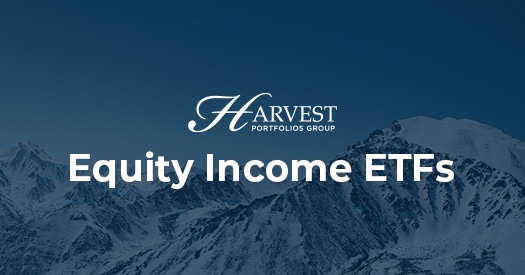From the moment they start putting money in the market investors are told to follow the 60/40 rule. Countless investment fund issuers have packaged the 60/40 rule logic into their balanced funds. These funds offer a specific allocation to equities and bonds, usually in line with the 60/40 rule, forming the core of a retail investor’s portfolio.
Understanding the 60/40 Investment Rule
The 60/40 investment rule is a fundamental concept in the world of portfolio management. At its core, the rule prescribes that an investor allocates 60% of their portfolio to stocks (or equities) and the remaining 40% to bonds (or fixed income). This allocation strategy stems from the desire to strike a balance between the growth potential offered by stocks and the relative stability and interest income offered by bonds.
Throughout history, in times of stock market turbulence, investors have frequently turned to bonds for their relatively predictable income streams. Bonds served as a reassuring cushion during volatile markets and offered diversification benefits. This 60/40 combination was devised to optimizing returns while mitigating the impact of market fluctuations, making it a popular choice for investors, especially during times when bonds delivered consistent and attractive yields. The idea was that even if the stock market experienced a downturn, the bond portion of the portfolio would not only preserve capital but also deliver steady returns in the form of interest payments. Thus, for decades, this balanced approach served as a reliable roadmap for those aiming for steady, long-term wealth accumulation.
Limitations of the Traditional 60/40 Rule in the Current Market
While this rule has been a long-standing guideline for asset allocation, it has come under some scrutiny and adaptation due to changing market conditions. Prior to early 2022 when interest started to rise, we had undergone years of historically low interest rates, challenging the efficacy of the traditional 60/40 rule for many investors. In essence, the era of low interest rates resulted in declining bond yields, compelling investors to seek alternative sources of yield. In other words, individuals with 40% of their portfolios invested in traditional bonds found that they were not contributing as significantly to their overall returns as they had in previous cycles.
Additionally, the global economic environment has become much more unpredictable, with geopolitical tensions, trade disputes, and the effects of a post global pandemic. In such volatile conditions, the once reliable inverse correlation between stocks and bonds isn’t as pronounced. There have been instances where both stocks and bonds declined in tandem, putting portfolios at risk. This begs the question: If both segments of a 60/40 portfolio can experience simultaneous downturns, where does one turn for diversification and risk mitigation? The search for alternative sources of income and diversification is worth further consideration.
The Case for Equity Income with Covered Calls
In the pursuit of alternative income strategies, one strategy that has gained traction among savvy investors are ETFs enhanced with covered calls, including the Harvest ETFs core line up of Equity Income ETFs, Enhanced Equity ETFs, and Fixed Income ETF. Let’s focus on the Equity Income ETFs and break this down further.
Equity income essentially refers to dividends received from shares of well-established, dividend-paying companies. These dividends are a portion of the company’s earnings, distributed to shareholders, and they can offer a regular stream of income. Such companies are often in mature industries, have a stable earnings history, and a commitment to returning capital to shareholders. This income source can be more generous than the current yields on many traditional bonds.
But how do we further optimize this? Covered calls. A covered call strategy involves holding a stock or ETF and then selling (or “writing”) call options on that stock or ETF. The premium received from selling these call options provides an additional income stream, on top of your dividends.
Covered calls can also offer a cushion during market downturns. When a stock’s price drops, the income from the call option can help offset, to some extent, the stock’s capital depreciation. This not only provides potential for additional income but also offers some degree of downside protection in unpredictable markets.
Combining the stable dividends of equity income with the supplementary income and downside characteristics of covered calls is a strategy Harvest ETFs employ to generate consistent returns and potentially reduce the risk associated with holding equities.
Harvest ETFs: Canada’s largest independent provider of active Covered Calls Strategy in Canada, and among the first
Harvest ETFs is one of the largest active covered call managers in Canada. We are also one of the earliest adopters of active covered call ETFs in Canada. At Harvest ETFs, we take pride in making the covered call strategy accessible to Canadian investors. In response to changing financial landscapes and the growing demand for alternative income strategies, we customize our offerings to combine the benefits of equity income with the potential of covered calls. Here are a few examples of the equity income covered call solutions we offer:
Harvest Tech Achievers Growth & Income ETF (HTA)
In an era dominated by technology, the HTA ETF offers investors an opportunity to partake in the growth of the tech sector while enjoying the advantages of the covered call strategy. The underlying assets comprise shares of leading tech companies, known for innovation and market leadership. By implementing a covered call approach, the investment team at Harvest ETFs optimize potential income generation, even in a sector traditionally known for growth rather than dividends. This dual focus on growth and income sets HTA apart and offers investors a unique entry point into the tech world.
Harvest Healthcare Leaders Income ETF (HHL)
The healthcare sector, with its crucial role in global well-being and its continuous advancements, presents another fertile ground for investors. HHL focuses on healthcare leaders – companies at the forefront of medical research, innovation, and service delivery. By integrating the covered call strategy, we ensure that investors are not just banking on the future growth of the healthcare sector but are also benefiting from consistent income in the present. This balance of future potential with present returns makes HHL a compelling choice for those looking to diversify into the healthcare space.
By intertwining the robustness of equity income with the innovation of covered calls, we present Canadian investors with offerings that are both timely and timeless. It’s not just about navigating the current market scenario; it’s about equipping portfolios for the evolving landscapes of the future.
Harvest Diversified Equity Income ETF (HDIF)
HDIF is a multi-sector ETF with covered call options. Through HDIF, the investor gains access to an equal weight based of Harvest ETF strategies applying our quality-focused and income-generating investment philosophy to sectors and major trends with commanding growth tailwinds. The basket of securities owned by the ETFs in HDIF are made up of global leaders, among the largest and most important in the world. They are all leaders. The covered call strategy applied to HDIF offers an attractive monthly income to its investors. An actively managed covered call strategy can turn market volatility into cash flow. At the same time, holding a portfolio of large capitalization companies across sectors.
Why New Investors in Canada Should Consider This Shift
For budding investors in Canada, the financial journey often begins with the search for an investment strategy that aligns with their aspirations, risk tolerance, and the ever-evolving economic landscape. While traditional wisdom and foundational strategies like the 60/40 rule have their merits, the modern Canadian economic scene invites a fresh perspective.
Investing in dividend-paying stocks provides access to well-established industries and companies with a proven track record. Concurrently, the covered call strategy offers a proactive method for generating extra income, which can be especially valuable in times of uncertainty or when markets are flat.
Furthermore, for new investors, it’s not just about immediate returns; it’s about building a robust portfolio that can weather market storms and capitalize on growth phases. The allure of consistent dividends, combined with the premium from covered calls, which represents a protective cushion and income potential, covered calls, can serve as a dual engine providing both stability and growth opportunities. As Canadians look towards securing their financial future, strategies like these, which resonate with the pulse of the current economy, might very well be the beacon guiding their investment voyage.
Conclusion
The investment world is in constant flux, driven by global events, technological advancements, and shifting economic landscapes. While the tried-and-true 60/40 rule served many past generations effectively, today’s unique challenges and opportunities beckon for a fresh approach. Equity income, combined with the innovative strategy of covered calls, offers a compelling alternative, harmonizing the potential for growth and stability. With pioneers like Harvest ETFs leading the way in Canada, investors now have an opportunity to help align their portfolios with both the present economic reality and future possibilities. As we stand at the crossroads of tradition and innovation, it’s important for investors, new and seasoned alike, to evaluate, adapt, and optimize their investment strategies to help them achieve a prosperous financial future.













